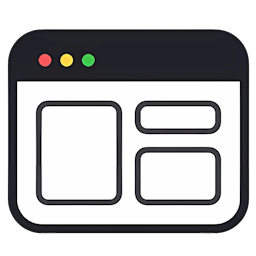
Template
A template in the context of Atomic Design is a higher-level component that defines the overall structure of a page or section. Here is an example of a simple template for a webpage called HomePageTemplate. This template might include a Header organism, a MainContent organism, and a Footer organism:
// HomePageTemplate.js
import React from "react";
import Header from "./Header";
import MainContent from "./MainContent";
import Footer from "./Footer";
const HomePageTemplate = () => {
return (
<div>
<Header />
<MainContent />
<Footer />
</div>
);
};
export default HomePageTemplate;
In this example:
HomePageTemplateis a template that assembles different organisms (in this case,Header,MainContent, andFooter) to define the structure of a complete webpage.
Now, let’s create a simple MainContent organism as an example:
// MainContent.js
import React from "react";
const MainContent = () => {
return (
<main>
<h1>Welcome to My Website</h1>
<p>This is the main content of the page.</p>
</main>
);
};
export default MainContent;
The Header, MainContent, and Footer components are used as molecules and organisms within the HomePageTemplate template.
Now, we can use the HomePageTemplate template in our application:
// App.js
import React from "react";
import HomePageTemplate from "./HomePageTemplate";
const App = () => {
return (
<div>
<HomePageTemplate />
</div>
);
};
export default App;
This demonstrates how templates can be used to structure different sections or pages of your application by combining organisms. Templates are higher-level components that help maintain a consistent layout across multiple pages.
References:
- [1] https://atomicdesign.bradfrost.com/chapter-2/